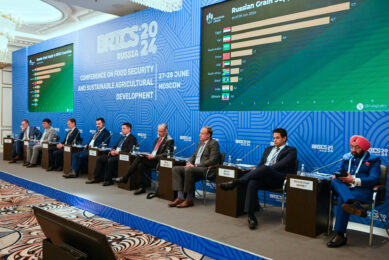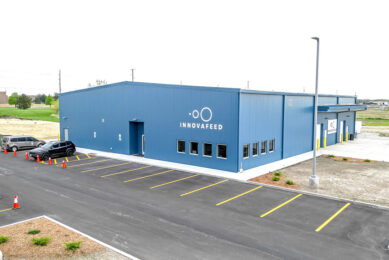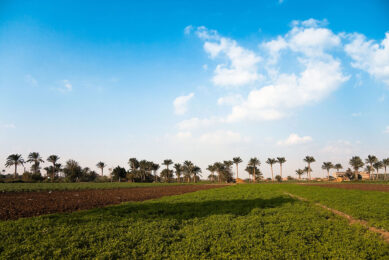Brazilian feed industry faces new scenarios to keep growing

In an interview with All About Feed Ariovaldo Zani, president of Sindirações (the Brazilian association of feed producers), details the main drivers, obstacles, and advances for the market.
Brazil’s feed production might grow 25% over the next decade after increasing more than 60% since 2010. The pace is slower but remains an impressive development that is based on domestic and global demand for Brazilian animal protein.
All About Feed – Is the sustained growth of Brazilian animal production in recent years likely to continue? Why? What are the main drivers or obstacles?
Ariovaldo Zani: Since 2010, Brazilian feed production has increased by almost 60%, due to the development of national livestock in response to growing foreign interest in Brazilian animal protein for all species: beef (6%) and dairy (6%), aquaculture (1%), but mainly poultry (36%) and pork (21%).
Nonetheless, productivity gains, namely better feed conversion and shortening of the production cycle (resulting from the introduction of innovative additives) will lead to lower intake of balanced feeds and, consequently, slower growth in demand.
How is the animal nutrition market evolving in 2023? What are the perspectives for the last half of the year?
In this current year, Brazilian animal feed production may increase by up to 2.3%, and the amount will move towards around 56 million tonnes of maize and more than 18 million tonnes of soybean meal, which, together with other inputs and additives, may total 85 million tonnes (mineral salts not counted).
Over the last few months, the price of the main animal feed commodities (maize and soy/bran) has been under pressure due to the generous harvests already achieved and the hypothetical replenishment of stocks here and there.
This scenario is quite different from the previous one when there were high international prices due to the recovery in demand after the outbreak of the Covid-19 pandemic and disruptions to supply and international trade aggravated by the conflict in Ukraine.
The productive sector in general is experiencing transformative technological advances. How does this work in the animal nutrition sector? Which technological highlights are getting the most attention?
Agriculture is an integral part of the set of anthropogenic activities that potentially increase the temperature of the planet. It’s a phenomenon that has been determining goals and contributions to mitigation and even neutrality in greenhouse gas emissions.
As the global population grows and incomes improve, the demand for animal protein grows. Despite the projections pointing to an increase in methane/CH4 emissions, the perception is that the disposition of more ambitious agricultural climate policies ends up colliding with the protectionism and the heavy subsidies offered to producers in developed countries.
That is diverging from the key function of achieving the goals of nutrition, rural development, and poverty reduction in developing countries.
Furthermore, methane/CH4 may be a secondary mitigation target, given the role of carbon dioxide/CO2, which persists in the atmosphere for many centuries and even millennia, accumulating over time and warming the climate until net emissions reach zero for temperature stabilisation.
On the contrary, methane/CH4has an atmospheric lifetime of approximately 12 years, so its emissions will not result in additional warming, and even modest reductions will promote climate neutrality.
In addition to the traditional nutritional strategies with a direct influence on fermentation and based on ionophores, probiotics, yeasts, essential oils, unsaturated fats, etc., manipulation of the ruminal microbiota, through a certain chemical compound capable of inhibiting methanogenic micro-organisms and reducing by up to 30 % the relative emission of Methane/CH4, has proved to be a very promising innovation.
Likewise, society increasingly demands sustainable fundamentals in production, from environmental to animal welfare and global health. Are nutrition companies sensitive to these demands? In what way?
Encouraged by global society and pressure from public and private investment funds, practically all entrepreneurs who supply inputs to the animal protein production chain have stated that they have included the acronym ESG (Environmental, Social & Governance) as a corporate vision, end-to-end.
The companies are focused on caring for the ecosystem, collaborating with innovative solutions aimed at long-term sustainable development, mainly those aimed at mitigating their environmental footprint.
This reasoned collective discourse, which ultimately translates into generating a more positive impact on society, can be attested to by the satisfaction of agricultural customers due to the results obtained, and also thanks to the financial support of companies in national and international events, which have unquestionably become true platforms for the dissemination of that commitment.
How is the relationship between the Brazilian animal nutrition market and companies and trends from other parts of the world?
The supply chain of the Brazilian animal feed industry (ingredients, premixes, cores, concentrates, feeds, and mineral supplements) is made up of local entrepreneurs and other transactional companies, with factories installed in Brazil, or direct imports (additives from Europe, United States, China, India, etc.). They are responsible for establishing commercial transactions and sharing technical/scientific expertise in order to guarantee the sustainability (environmental, economic and social) of the livestock production chain.
How does the industry assess the risk of pandemics such as avian flu, African swine fever, and others? What are the strategies for serious crises like these? What could the impact be?
The possibility of the occurrence of these pandemics cannot be ruled out, since science rules out the concept of zero risk. However, such an occurrence will be greatly reduced when recognition of disease outbreaks and rapid elimination are strategic priorities.
It is important to point out that Brazil remains free of cases of avian influenza in commercial herds, which are submitted to the strictest reinforced biosecurity controls.











